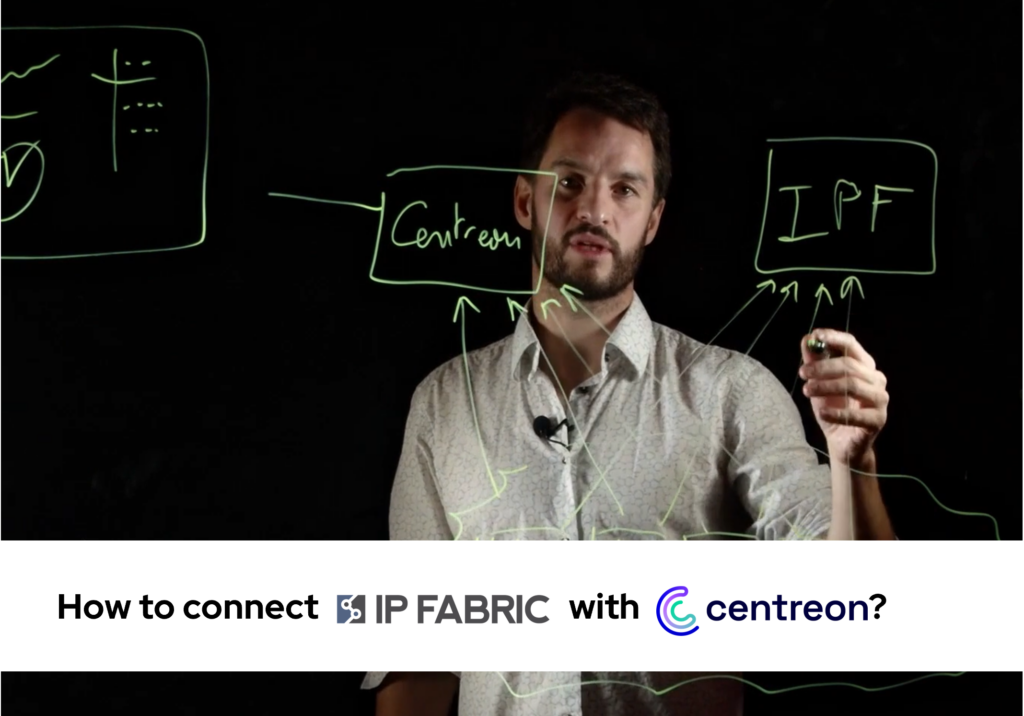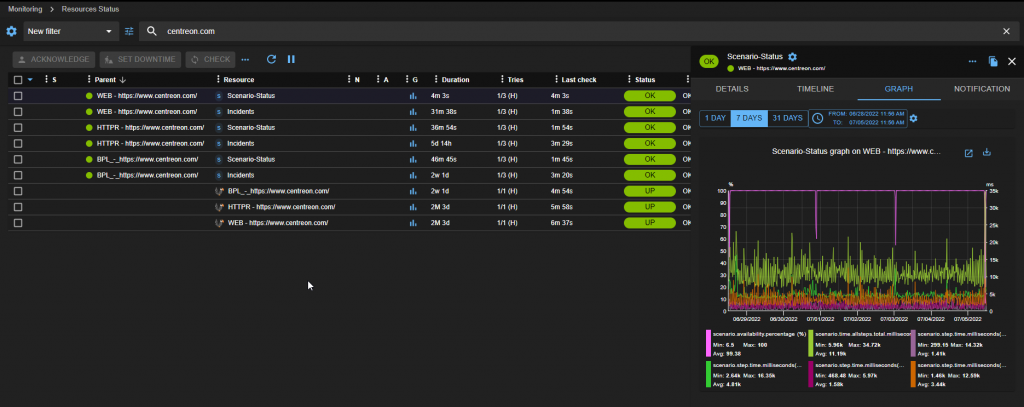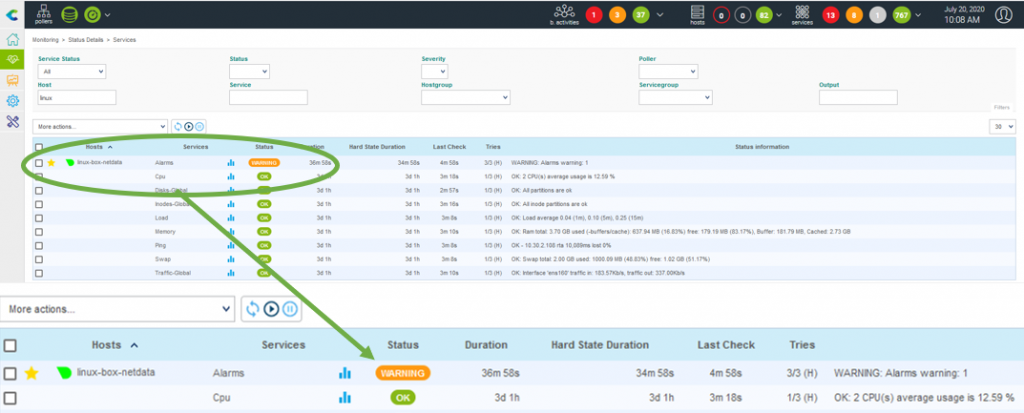Everyone used to agree that: an IT monitoring perimeter is a pain to keep up to date. But today, this is a myth. Connectors, often called “plugins,” do all the heavy lifting, ensuring instant, comprehensive and accurate monitoring for optimal IT performance. Connectors are used to extend IT infrastructure monitoring to all domains. Think networks, cloud, virtualization, databases, applications, servers or other hardware and storage assets, up to unified communications elements like VoIP and ToIP. In short, connectors are prepackaged kits you download to instantly find and integrate an IT device to your monitoring platform. Read this post for a crash course on Centreon connectors, which significantly reduce Time-To-Monitoring (TTM) and Mean Time To Repair (MTTR) for flawless, secure digital user experiences.
If you like to learn by doing, you can skip the theory. Download the new forever free Centreon IT Edition trial and start playing with any of our 400+ connectors covering the most popular IT domains.
What are IT infrastructure monitoring connectors?
Connectors are the enablers of instant, turnkey IT infrastructure monitoring. Plugin Packs or Centreon connectors are downloadable, preconfigured elements that seamlessly integrate in your Centreon software. Essentially, they are a set of standardized, preconfigured command, host, and service templates. Each template package is associated with monitoring plugins to connect a given IT domain to your monitoring perimeter. When you install a connector, it imports preconfigured objects into the Centreon software such as commands, host templates and service templates. Over 400 industry standard IT domains are currently covered in our connector catalog: networks, servers, applications, storage, database, devices, equipment, etc., bridging physical, virtual and hybrid infrastructure. You can also jump here for a step-by-step guide on using connectors.
“Connector-based IT infrastructure monitoring offers an immediate advantage: instant end-to-end, holistic visibility from on-premise to cloud to edge.”
Who is using IT infrastructure monitoring connectors and why?
Connector-based IT infrastructure monitoring offers a maximum of flexibility in ensuring the monitoring platform will always reflect the current reality of the IT ecosystem, which is in itself a dynamic ensemble that’s constantly changing as needs and technology adoption evolve. Businesses with complex, distributed IT infrastructure use the connector approach to support optimal IT performance and service availability, through a very simple strategy: monitoring everything, 100% of the time.
What is the relationship between the connectors and monitoring platform, how do they interact together?
A monitoring solution is only relevant if it can collect data from 100% of the infrastructure elements. Simply put, if there’s no data to share, there’s no monitoring to report. The Centreon’s commercial editions harness a universal data collection engine called a poller. The poller uses a set of connectors called plugins to collect the data to be monitored. This is how you can ensure the data collection is exhaustive and that it applies to both legacy IT equipment and cloud technologies or cloud services- and everything standing in between.
Powering up instant monitoring with Auto-Discovery
As a complement to the automation offered by connectors, the Centreon enterprise IT monitoring platform employs an Auto-Discovery engine that detects new elements to be monitored, such as new network interfaces or disk volumes installed on a server or router, for example. This ensures real time monitoring of your entire infrastructure, removing blind spots.
Connectors extend the scope of monitoring to all IT domains
Centreon maintains a catalog of all available connectors, so you don’t have to search for them. The resource covers over 400 popular IT domains and is constantly growing. One recent addition, for example, is a connector for the Maltem Insight Performance (MIP) solution, enabling the collection of user experience KPIs. Check out the catalog to see what’s covered and stay in touch with us to be notified when there are new additions.
What do plugins or connectors in those “packs” do exactly?
Centreon connectors (or plugins) collect data using various protocols such as SNMP, REST API, JMX, NSClient++/NRPE, SSH connection or other standard protocols. They are marvels of flexibility. Because your IT operations are complex, our connector packages allow you to adapt to a range of contexts, using different protocols or different versions of a given protocol to collect data, depending on the data you’re looking to collect.
Example: Windows
Let’s say you want to monitor Windows. You can either use “Windows SNMP” or “Windows NRPE 0.5” to modulate how and why you monitor Windows servers. The SNMP protocol collects generic information (Memory/Swap/CPU/Disk rate usage, process status, etc.), while the NRPE version uses the NSClient++ program, collecting additional data above the generics. You decide what’s relevant for you and the Centreon connectors do the rest.
“ There’s no need to reinvent the wheel using open source plugins. Plugin Packs can do the job for you! I’ve once attempted to develop something to monitor Windows servers from a template. It worked well, but at the end of the day it was a lot of unnecessary work. The Plugin Packs are really plug and play – they work great. With Plugin Packs you can monitor everything, right from your Centreon solution. Centreon Plugin Packs, honestly, they’re just great. It’s really satisfying to find that the job’s already done. It just makes you happy!’’ – Benjamin, SysAdmin in public sector.
How much time is saved using connectors?
Not counting maintenance, which is time-saved when you use Centreon connectors, you could estimate that any DIY integration would take a minimum of 3 to 4 days to develop and create, and upwards of 10 to 15 days, depending on the experience level of the developer. When you consider the complexity and range of the modern IT system, even for smaller ITOps, that’s a lot of time saved that can be invested towards revenue-generating tasks. If you’re looking to adopt ITIM best practices, which entails comprehensive IT infrastructure monitoring, then the connector approach is probably your best strategy to improve time to monitoring and free up much needed IT resources.
Takeaway: 3 key benefits of a connector-based IT monitoring approach
- Full visibility. Each and every equipment, middleware or applications, from on-premise legacy assets to private and public cloud environments, all the way to the edge of the network can be instantly found and seen. This means you can monitor end-to-end IT workflows and deepen the focus of your IT monitoring from service availability to service quality.
- Always up to date. You’ve experienced it: IT infrastructure monitoring processes can be tedious and time consuming, providing little incentive to update the monitoring platform, even if everyone’s well aware of its importance for optimal IT performance. With connectors and Auto-Discovery functionalities, there’s nothing standing in the way of a current IT monitoring perimeter, from software-defined network elements, AWS or Azure cloud assets, to Wi-Fi access points or any other component that is part of your agile IT infrastructure.
- Accurate monitoring. Whatever the diversity of your infrastructure, you are covered in managing in a single click all the technicalities and parameters that ensure your IT monitoring provides the single, accurate source of truth you need to quickly spot and locate issues. In other words, you skip the complex and minute configurations to go straight to monitoring.
Could a connector-based IT monitoring strategy work for your team? Try it for free today and monitor 100 hosts in your actual environment, for as long as you want.















